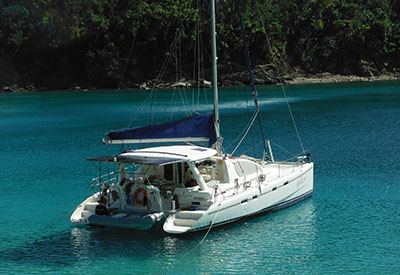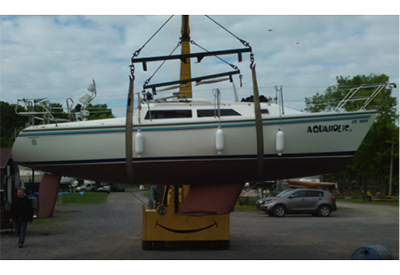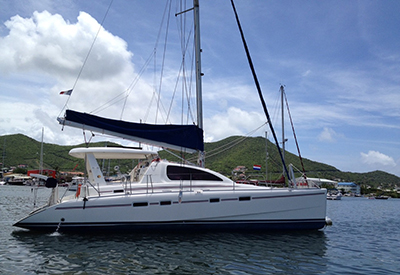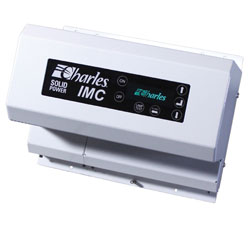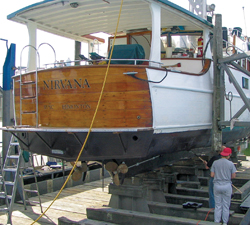The Comforts of Home with Internet Onboard
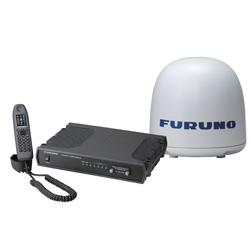
By Andy Adams
 It used to be that “all the comforts of home” meant an easychair, a pipe and the newspaper.
It used to be that “all the comforts of home” meant an easychair, a pipe and the newspaper.
Today, the easy chair is an office chair and the pipe is gone, no matter what we could have put in it. The poor old ‘paper’ newspaper has been replaced with an electronic version that carries pretty much all the same stories, plus streaming video, the ability to search, cut ‘n’ paste things you want to keep and stories that you can forward to friends and colleagues.
The ads used to subsidize the 10 cents an issue you paid the paperboy. Now, the ads are all but invisible (or you close them the instant they open) and the newspaper publisher is going broke sending you free news. It’s a strange world!
Instead, you are paying the money yourself and directly!
You pay for connectivity and bandwidth and 10 cents will now barely buy you a cryptic e-mail – never mind what it costs to download a chart at sea. But, wait a second – download a chart at sea? That could be very handy!
Also, sea-going Internet is dropping in price and rising in performance. To help guide us through the maze of technology, we contacted Ken Harrison at Summerhill CA Sales. “Can you please simplify this a bit?” we asked.
Ken decided that the best way to explain the current state of Internet onboard was to divide the discussion into three segments: good, better, best.
Good
Everyone has a cell phone and now, many people carry a BlackBerry. Your marina probably has localized Internet service that you can connect to, either for free or by paying a fee. The problem is that when many boats in the area are all sharing the same bandwidth, the speed will slow down dramatically.
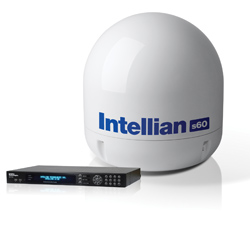 If there’s 1 GB of bandwidth and a second person joins in, they each drop to 500 kB of bandwidth. This is referred to as contention ratio. The more people you have on the system, the slower it gets – and it can get painfully slow.
If there’s 1 GB of bandwidth and a second person joins in, they each drop to 500 kB of bandwidth. This is referred to as contention ratio. The more people you have on the system, the slower it gets – and it can get painfully slow.
Where your marina offers a wireless signal, sailboat masts and other types of structure can interfere. Some people will source USB-based WiFi antennas such as those offered by RadioLabs or more complex systems like those from GeoSat Solutions. An investment of $200 or so can get you started, but prices can reach $1000 or more. On the other hand, that gives you an onboard networking system delivering a wireless signal anywhere on the vessel and the WiFi booster can increase range to the main wireless antenna by up to 30 times.
So relatively speaking, improved wireless computer connections only require a small investment, and depending on what you hope to achieve, it could become your floating office. That could help you keep boating a lot longer!
Better
If you like that idea, Ken Harrison explained that there is now a better system called the 3G cell phone protocol; the new 4G is coming soon for streaming data. Initially, however, that will only be available regionally. You probably have a basic cell phone rate plan; most plans are generally fairly generous, so few people overstep their plan.
Next, most cell providers have “Mobile Internet” packages available that they combine with their plans. Essentially, this a USB antenna stick you connect to your laptop that delivers download speeds of around 7Mbps. Rogers, Bell, Telus and others all have such options. Now you have a relatively good connection but Ken cautions that downloading a lot of data using a wireless system may quickly exceed your monthly limits and additional time can be quite costly.
Another approach is a cellular booster. Cellular boosters need to be Industry Canada approved and it is best that you source a product that has IC approvals indicated on the product.
However, cell phone signal boosters like the Digital Antenna Power Max DA4000 increases range up to 50 miles. Wilson Electronics has a similar product to increase your cell phone from .25 to 3 watts of power. Shakespeare Marine offers its Cruise Net for cellular applications. Ken points out that cellular boosters can only boost a signal that they can see.
Best
Commercial shipping businesses have long used radio and more recently satellite communications to track their ships, gather critical weather data and to enhance safety. These commercial interests have borne the initial costs of pioneering satellite communications and today, prices and equipment sizes are getting smaller.
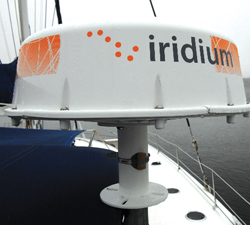 Recreational boats from 35 -55 feet can now tap into this technology. The trick has been getting the antenna size down small enough to fit smaller craft and still track the signal accurately as the boat moves or rolls in the sea.
Recreational boats from 35 -55 feet can now tap into this technology. The trick has been getting the antenna size down small enough to fit smaller craft and still track the signal accurately as the boat moves or rolls in the sea.
There are three ways of moving up to the best system. Open Port by Iridium is one solution but this was developed for commercial use and may require too large an antenna for mid-range recreational boats.
Now people are going to FleetBroadband (FB) and it currently is available at three different levels: 150 kB per second, 250 kB per second and 500 kB per second. FB uses a smaller antenna but these still cost between $5,000 and $15,000 US list, so it’s a major investment in hardware. These antennas are stabilized and will stay connected to the satellite even in rough conditions. Manufacturers of FB systems include JRC, KVH, Furuno and Thrane & Thrane
Then comes VSAT (Very Small Aperture Terminal) – that receives and transmits – and you get a much more reasonably sized antenna. This started off as C-band with a 2.5-meter wide dish that was stabilized. Next came the KU band that had a 1-1.5 m wide dish and more recently, a 24” antenna size.
Manufacturers of VSAT antennas include Intellian (24″ and 1 m), KVH (24” only) and SeaTel (24”and1-1.2 m). Users can buy a fixed rate plan and they can choose from different speeds for both up and downloading and voice calls over VOIP (Voice over Internet Protocol). This is an interesting issue. It may be that you only want to send simple data or voice messages but you might want to download substantially big files, so you might buy a more powerful download then upload. These are always “on” antennas, the same as you have with an Internet connection at home.
These are pretty serious systems with a $25,000 antenna and $1000 a month fee being commonplace, but you can use what you want which may be affordable for your floating office. Prices are also dropping quickly for both the equipment and the airtime. There are many different airtime packages available to suit the need and application. With something as basic as VOIP calls you can get down to .25 cents per minute including long distance within a region.
So far, there is nothing smaller than the 24” VSAT dish however it also requires a lot of power to run so you will certainly need a big generator or shore power to accommodate it.
But consider the value of having your boat as functional as your home office?
Sailboats can get FB at 150 kB per second just for voice and data and as long as you keep the sessions short, that could be a very valuable addition to any boat heading to the Caribbean for the winter.
Ken cautions boaters that video streaming can be really costly – up to $50 a minute on FB. “It’s important for people to understand the costs and the rates. You can set up “alerts” to prevent unwanted downloading such as spammers sending you photographs or jokes,” he said. “You should also restrict your Windows and software updates to when you are connected to shore or other wireless connections. Doing this will only cost you more as FB is billed per MB of usage. Full video streaming and large application downloads are best suited for VSAT solutions.”
Another valuable feature is to be able to manage your boat from a distance so you can monitor electrical systems, fire systems, security systems through applications such as the new NMEA 2000 networking standard. The new 4G systems will offer even more and it won’t take long before we find out how attractively priced they will be. Just recently, FB price promotions have been announced that include the equipment in the contracts – the way cell phones agreements do – bringing this down to one reasonable monthly bill.
Stay tuned…if boat owners can get all the comforts of home (or office) onboard, they could be boating a whole lot more!
Photo Captions:
Photo 1 – Felcom 250 – Furuno is about to release this Inmarsat FleetBroadband system continuing the march with a faster, more cost-effective solution to marine broadband data and voice communication on a global basis.
Photo 2 – Intellian S60 – VSAT antennas like this Intellian S60 and others from KVH and SeaTel are as small as 24”. Users can buy a fixed rate plan and they can choose from different speeds for both up and downloading and voice calls over VOIP (Voice over Internet Protocol).
Photo 3 – Iridium OpenPort 1 – Open Port by Iridium is one solution to getting Internet onboard but these were developed for commercial use and may be too large an antenna to suit mid-range recreational boats.

